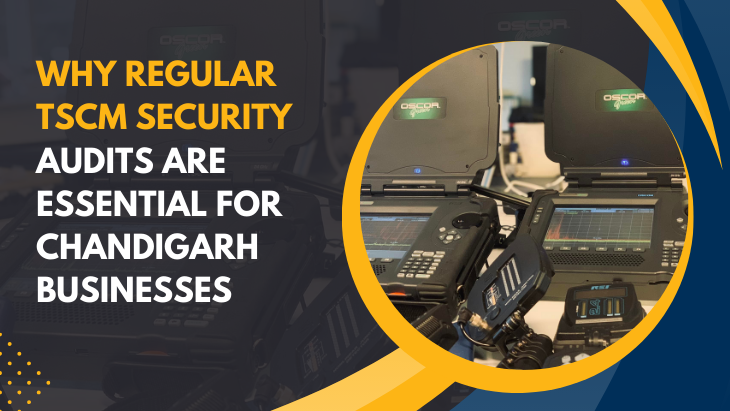Now, more than ever, privacy is under attack. There is a multitude of frightening surveillance devices such as hidden hotel room cameras, office spy devices and even homes that are bugged. People often disguise these as smoke detectors, chargers, or clocks, making them very difficult to locate without expertise.
This is where private investigators come in. They use special tools and advanced bug-sweeping methods to find hidden cameras and spy devices that regular checks might miss. In a world where privacy means safety, expert detection isn’t just a good idea; it’s a must.
Understanding Hidden Camera & Spy Device Technology
You need to know what detectives are up against before you can understand how they find spy gear.
Hidden Camera
Today’s secret cameras are small, strong, and easy to hide. They can go inside things we use every day, like:
- Smoke detectors
- Alarm clocks that wake you up
- Phone chargers
- Mirrors that reflect in both directions
- Wall hangings or decorative items
- Air conditioning vents
These cameras often have advanced features like night vision, motion detection, and Wi-Fi connectivity, which lets someone stream or record from a distance.
Spy Devices Beyond Cameras
There are other dangers besides cameras. There are also other kinds of surveillance tools, like:
- Sound Bugs are tiny microphones that can pick up or send sounds.
- A GPS tracker is a device that is put on a car to keep track of where it goes.
- A wireless transmitter can share live audio or video signals to a different location.
These spy devices are becoming smaller, more sophisticated, and more challenging to detect as spy technology continues to evolve.
How Detectives Find Hidden Cameras and Spy Devices
1. Initial Steps: Visual and Physical Inspection
A thorough manual check is usually the first thing detectives do.
- Things that don’t belong in the environment.
- Small holes or openings that could be camera lenses, like the size of pins.
- Wires or parts inside electronics that don’t look right.
- LED lights that could flash or shine when it’s dark.
Things are often hidden in smoke detectors, ceiling corners, bookshelves, wall art, electrical outlets, and furniture. Detectives also look for surfaces that reflect light, which can happen with even a small camera lens if the light is right.
2. Optical Detection Techniques
Some devices can be found with a physical inspection, but many are too well hidden. In this situation, detective uses advance tools that can detect light, such as:
- People use flashlights or laser pointers to look for reflections from camera lenses.
- Lens Detectors are professional tools that send out a red or infrared beam to light up hidden lenses.
- Two-way mirror tests: Detectives use flashlights to look behind mirrors to see if there is a secret space there.
While a smartphone flashlight or other do-it-yourself methods may be helpful, professional-grade tools are significantly more accurate and reliable.
3. Electronic Detection: RF Detectors and Frequency Scanners
Electronic scanning is one of the best ways to do this.
RF (Radio Frequency) Detectors:
- These devices can pick up signals from wireless cameras, bugs, and transmitters.
- Frequency scanners: Used to tell the difference between normal signals, like Wi-Fi or Bluetooth, and signals that don’t seem right.
Detectives investigate for devices that may be recording information passively, even if they are not actively sending out signals. The modern spy devices often emulated popular signals which makes it difficult to interpret results accurately without an expert.
4. Infrared and Thermal Detection Methods
Many secret cameras use infrared LEDs to see in the dark. Detectives can find these with
- Smartphone cameras, which can see IR light that isn’t visible to the naked eye.
- Using special IR detectors that make hidden IR sources easy to find.
A thermal scanner is an additional tool used in the detection of hidden devices. When an electronic device is powered on, it emits heat. Detectives can locate concealed devices in walls, ceilings, or furniture by identifying unusual heat patterns.
5. Networks and Digital Scanning
Detectives also do digital sweeps now that spy devices that work with Wi-Fi and the Internet of Things are common.
- Searching for new or hidden devices on Wi-Fi networks.
- Looking for unusual data traffic or devices that send data to servers they don’t know about.
- Using apps and special software to find IP cameras that are connected to the network but shouldn’t be.
This is very useful in offices or hotel rooms, where hidden cameras might be sending video online.
6. Advanced Tools and Methods for Experts
When regular methods don’t work, detectives use high-end professional tools like:
- Non-Linear Junction Detectors (NLJD): These can find electronic circuits even when the device is off.
- Spectrum analyzers are used to find hidden signals in the electromagnetic spectrum.
- Signal Interference Analysis: Detectives look at how different signals affect each other to find hidden devices.
Professional investigators usually use these tools because they need special skills and training.
What TSCM (Technical Surveillance Counter-Measures) Does
Detectives use a method called Technical Surveillance Counter-Measures, or TSCM, in these kinds of cases.
TSCM has:
- Step One: Find out about the area and any risks that might be there.
- Electronic Sweep: Using RF detectors, NLJDs, and spectrum analyzers to find strange signals.
- Physical Sweep: Looking at walls, ceilings, furniture, electronics, and decorations.
- Thermal and optical checks: using heat and lens detection to find hidden devices.
- Network Analysis: Checking that no devices that aren’t supposed to be on the network are.
- Final Reporting: Writing down what you found and getting rid of any threats.
A TSCM sweep makes sure that no hidden cameras or other surveillance devices are left behind in your home, office, hotel, or car.
Why Hiring a Detective Agency is the Safest Choice
In some cases, store-bought bug detectors and do-it-yourself methods can be helpful, but they are not always reliable. Here are some reasons why you should hire professionals:
- Confidentiality and Discretion: Investigations are done in private, so sensitive information stays safe.
- Detectives have special tools that regular people don’t have.
- Experience and Knowledge: Professionals can see even the most complicated threats because they have been doing this for a long time.
- Legal Help: If surveillance devices are found, agencies can help victims figure out the best way to get help from the law.
People and businesses feel safer when they have professional sweeps done.
Preventive Measures and Best Practices
Professional sweeps are very important, but people can also do things to stay safe:
- Look around your home and workplace often for things that don’t belong there.
- When you stay in a hotel or rent a place to stay, be careful.
- Use service providers you can trust.
- At work, don’t leave private information out in the open.
Make sure to do regular professional sweeps, especially for important people and corporate offices.
In Conclusion
The rise of hidden cameras and spy gadgets is a big threat to privacy at home and at work. People who aren’t trained can’t see these devices very well, but skilled detectives with advanced tools and TSCM techniques can find them easily.
In today’s world, professional bug sweeping services are not a luxury; it’s a necessity if you want to keep your family, your business secrets, or your own privacy safe. Keeping an eye on things and paying for regular professional checks will keep you safe, give you peace of mind, and keep people from watching you without your permission.







